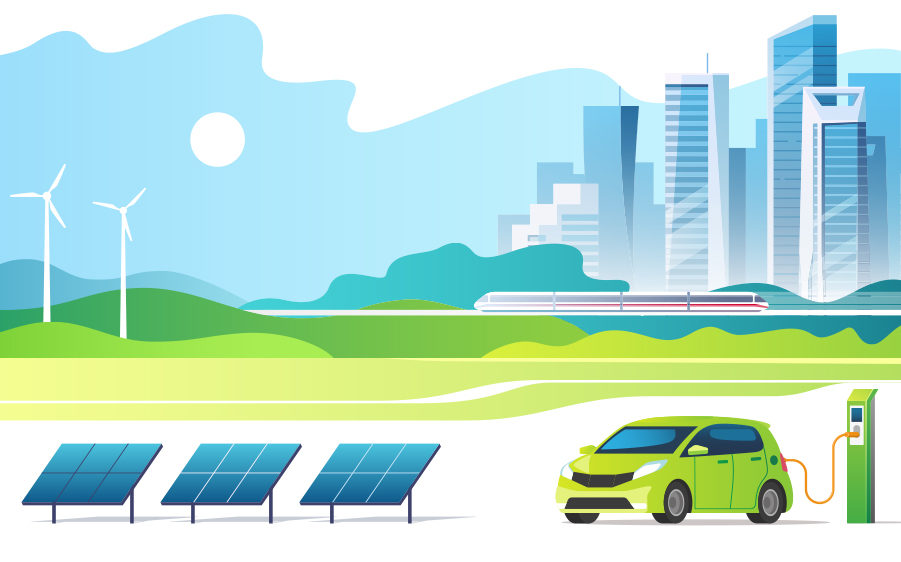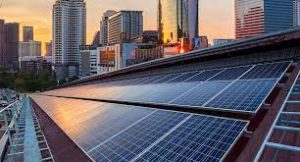LEED Green Vehicle Points
Here is the Everything to Know About LEED Green Vehicle Points
In September 2018, the US Green Building Council (USGBC) recently named Chicago the seventh city in the world with the highest level of city certification. Although the LEED for Cities program wasn’t launched until 2016, Chicago’s world-class leadership has proven to be a pioneer when it comes to excellent environmental records in mitigating climate change.
Today, with the LEED Platinum City brand among its counterparts such as Seoul and Washington DC, Chicago’s focused efforts and commitment to its sustainable development policy matrix have paved the way for not just green building initiatives, but, most of all. importantly, transportation strategies.
According to the 2017 Energy Benchmarking Report, a recent study highlights that Chicago reduced the city’s emissions by more than 20% in just two years. While that recognition is solely due to the city’s energy use, the introduction of electric vehicle chargers in Chicago is also slowly gaining traction. After the US Green Building Council announced version 4 for the LEED in 2012, the organization is moving now to LEED v4.1. GBCI noted that this is not a full release revision, but rather a small step into the future.
Just because v4.1 is on the way doesn’t mean v4 is out of date; far from there. The update mainly affects the composition of the material, reported Building Design & Construction. What that means for organizations that want to track points by integrating green vehicles, the rules should be more or less the same.
Are Plug-in (PHEV) hybrid vehicles leading to a new dieselgate?
Minimum criteria for the electrical vehicle supply equipment:
For EVSE-equipped parking spaces to qualify for Green Vehicle Point, the charging station must have a level 2 or higher charging capacity. This means it must have at least 208 volts of power. A device must also be connected to participate in the Demand Response Program. This will lower the cost of charging cars by encouraging more people to charge their cars after working hours.
Finally, EVSEs must comply with all applicable local and regional standards for electrical connectors. Two common examples of widely used regional standards are the SAE J1772 Ground Vehicle Recommendation Practice and the SAE Conductive Charging Clutch for Electric Vehicles.
- Process to get LEED points for electric / green vehicles:
Buildings can earn one point for green vehicles if they meet two requirements. The first is preferred parking requirements. 5% of all parking spaces must be reserved for green vehicles only. These spaces should be evenly distributed across the different parking lots.
Alternatively, projects have the option of granting green vehicles a 20 percent discount on parking rather than assigning them 5 percent of parking spaces. Information about the discount should be easily accessible and available.
The second requirement for LEED point for the green vehicles is the provision of an alternative service station spread in at least 2 percent of the whole parking spaces. The space offered by electric vehicle electric companies must not include the 5 percent reserved for green vehicles. Companies can choose to install charging stations for electric vehicles or liquid, gas or battery systems.
- Eligibility to get local and federal incentives:
As a Chicago PEV owner, you qualify for some of the best EV incentives in the world. Level 1 EVSE generally comes with a standard NEMA connector at the time of purchase, but for Level 2 EVSE with a 240V plug similar to most appliances, you can contact the Department of Commerce and Economic Opportunity of Illinois (DCEO) to receive a 50% discount on installation costs and a discount for vehicles up to $ 4,000. From state to state and local incentives, there are numerous financing options available that could serve as a catalyst for the sustainable transition from ICE to PEV.
- Types of charging stations:
On average, a Chicagoan travels 22 miles per day. Assuming you drive 12,000 miles a year, the $ 286 cost of charging a PEV at an additional 0.07 kWh rate gives you $ 1,634 in savings than the fuel cost of an ICE-based vehicle that costs approximately $ 1,920.Compared to PHEVs, electric vehicles typically take longer to charge when discharged because of their higher battery capacity due to their electrical configuration. So the charging time will depend on the type of ESVE you use to charge your PEV.
In this inverse relationship, efficiency is important: the higher the installation and equipment costs, the faster the load times, and vice versa. Level 1 120V and 208V to 240V class 2 EVSEs use alternating current (AC), due to higher charges due to DC conversion, and typically at 40 km and 1020 mph respectively. The Level 3, on the other hand, might be the pricier ESVE option, but you’ll get fast charging speeds of 6080mph thanks to the 480V DC outlet.
However, level 3 is only available for building management monitoring, and this on-demand installation typically begins with pre-determination of EPI concerns among multi-family tenants (MUDs) prior to selection. careful selection of electrical installers and authorization procedures. from the city. Chicago. For a residential or trail PEV, this custom setting requires you to install your own EVSE if you live in a single-family home or make a reasonable agreement with your property manager regarding ownership. ownership, maintenance and monthly electricity charges., As if they were fixed or not at a lower rate. accounting, meeting.
Earning LEED points for this EV credit requirement ensures that you will submit complete drawings, including EVSE type, location, driving method, circuit diagram, conduit, and electrical calculations. This is where our electrical engineering know-how lies: we can design the electrical capacity of your EVSE to operate at peak efficiency, for total efficiency, to charge all PEVs at once at full rated current.
Earning a LEED certification can be an obvious way to demonstrate your commitment to an environmentally responsible organization or to promote the use of electric vehicles. Upgrading your parking lot or building to earn LEED Green Car points is a convenient step for your employees or guests to drive electric cars. The Webasto charging system provides reliable and high-quality Level 2 charging stations on construction sites.




